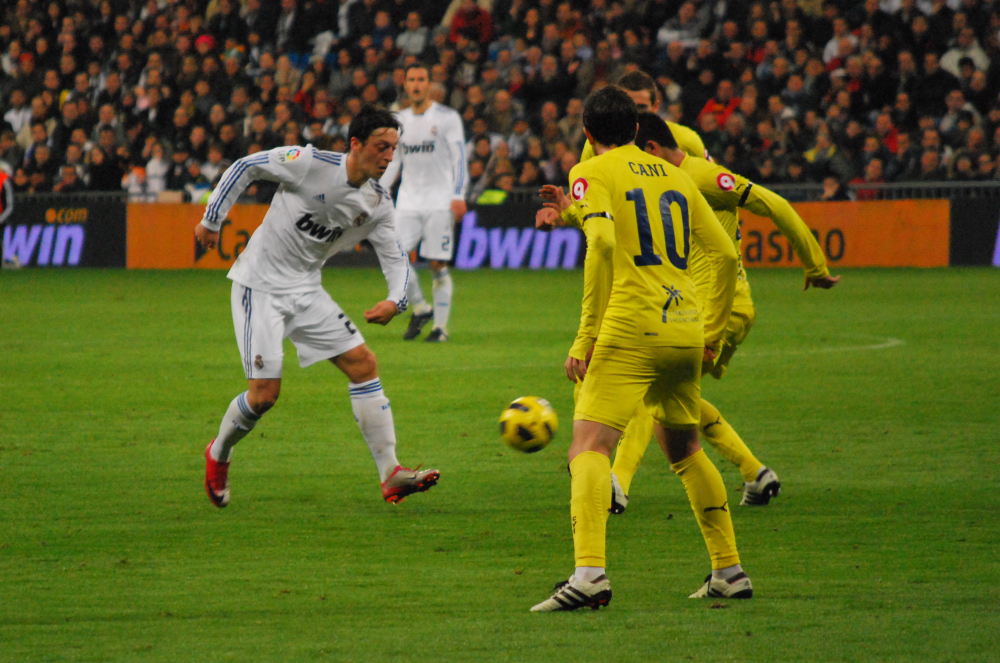Discover the top 50 captivating facts about Villarreal CF, the renowned Spanish football club. Uncover the club’s rich history, legendary players, remarkable achievements, and unique traditions in our detailed exploration.

Foundation and Early History
- Founded in 1923 as Club Deportivo Villarreal
- First Match: Played against Castellón in 1923
- Original Kit: White shirts and black shorts
- Women’s Admission: Free at the beginning
Development and Growth
- 1934-35 Season: Missed promotion to the Second Division
- Post-Spanish Civil War: Played again in the Second Division of the region
- Dissolution and Reformation: Dissolved in the early 1940s; reformed as CA Foghetecaz
- Name Changes: Became CAF Villarreal in 1950, then Villarreal CF in 1954
Stadium and Facilities
- Home Ground: Estadio de la Cerámica, previously known as El Madrigal
- Training Ground: Ciudad Deportiva Villarreal CF
Achievements and Competitions
- UEFA Europa League: Won in 2021
- UEFA Intertoto Cup: Won in 2003
- Copa del Rey: Won in 2022
- La Liga: Best finish was second in 2008
Iconic Players
- Santi Cazorla: Notable former player
- Giuseppe Rossi: Another key figure in the club’s history
- Juan Roman Riquelme: Played a significant role during his tenure
- Marcos Senna: Integral to Villarreal’s midfield in the past
Management and Leadership
- Motto: “Endavant” (Forward)
- La Liga Presence: Competing in the top flight for over a decade
Club Culture and Fan Base
- Nickname: El Submarino Amarillo (The Yellow Submarine) due to its yellow kit
- Fan Support: Known for a passionate and loyal fan base
- Community Involvement: Emphasizes youth development and community projects
Youth Academy and Development
- Academy of Excellence: Recognized for producing talented young players
- Villarreal B and C Teams: Provide a pathway for youth players to the first team
International Recognition and Rivalries
- International Success: Competed in UEFA Champions League and Europa League
- Derbi de la Comunitat: Notable rivalry with regional counterparts
Historical Milestones
- First European Competition: Entered the UEFA Cup in the mid-2000s
- UEFA Champions League Semi-finals: Reached in 2006 and 2022
Financial Stability and Transfers
- Current Transfer Record: Positive net spend in recent years
Club Infrastructure
- Stadium Capacity: La Cerámica holds approximately 23,500 seats
- Investment in Facilities: Continuous improvement of stadium and training ground
Global Fanbase
- International Fans: Attracts supporters from around the world
Sustainability and Future Vision
- Commitment to Sustainable Practices: Focus on environmental and social responsibility 3.
Memorable Matches and Victories
- 2021 UEFA Europa League Final: Defeated Manchester United
- Historic La Liga Campaigns: Notably finishing second in 2007-08
Club Evolution
- From Lower Divisions to La Liga: Spent much of its history in lower divisions before 1998
- Relegation and Promotion: Faced relegation in 2012 but quickly returned
Iconic Goals and Moments
- Europa League Success: Marked by memorable goals and matches
- Champions League Journey: Notable performances against top European clubs
Management Evolution
- Successful Managerial Appointments: Contributed to the club’s growth and success
Kit and Crest
- Current Badge: Adopted in the mid-1960s, similar to the present one
- Colors: Reflective of the club’s identity and heritage
Strategic Signings
- Key Transfers: Played a significant role in the club’s development
Fan Contributions and Engagement
- Fan Initiatives: Emphasize engagement and involvement
Competitive Edge
- La Liga Competitiveness: Consistently competes at a high level
Presidential Impact
- Leadership: Key figures have guided the club through its growth
Managerial Success
- Achievements Under Various Managers: Including domestic and European success
Future Ambitions
- Aiming for Greater Success: Both domestically and in Europe
Legacy and Influence
- A Model Club: Seen as an example of success for smaller clubs
